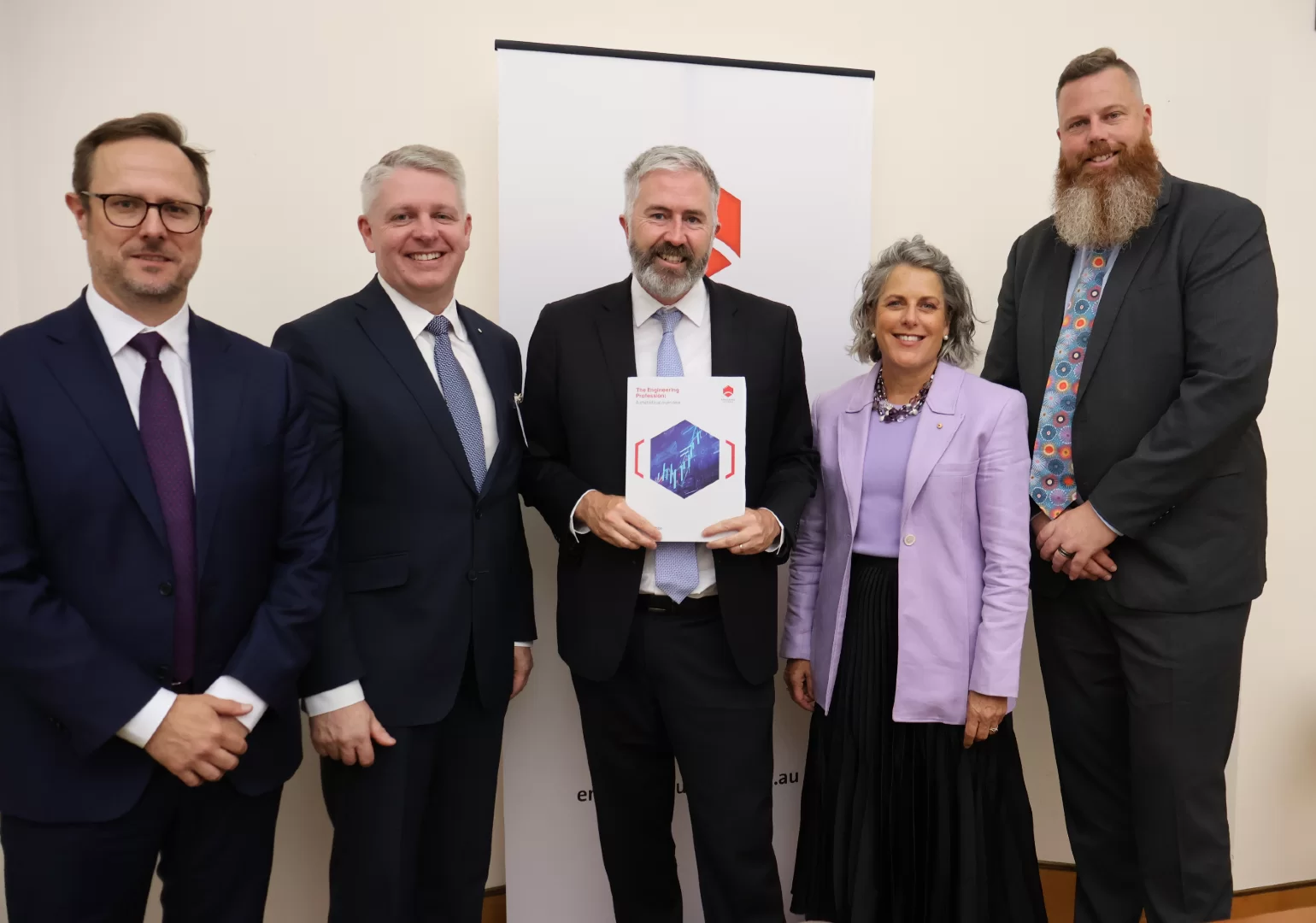Data analysis from Engineers Australia reveals the demographic and professional composition of the nation’s engineers. Here are six key takeaways.
Engineers Australia’s Statistical Overview of the Engineering Profession report, launched this week at Parliament House, provides insights into the state of engineering in Australia.
The analysis, which draws on census data obtained from the Australian Bureau of Statistics (ABS) and includes for the first time an interactive tool for readers, highlights the important role engineers play in driving every sector of the economy while also revealing a deepening engineering skills crisis.
Romilly Madew AO FTSE HonFIEAust EngExec said the analysis highlights the important role engineers play in driving every sector of the economy while also revealing a deepening engineering skills crisis.
“This report shows a growing gulf, with Australia sliding towards a ‘new norm’ of an economy hampered by the engineering skills crisis,” she said.
“[It] serves as a critical resource for policy and decision-makers, offering insights into the challenges and opportunities facing the Australian engineering landscape.
Some of the report’s top-line insights include:
- Engineers remain the backbone of Australia’s national capability
- The skills crisis is escalating
- Critical sectors have been impacted
- Urgent national attention is needed
- Engineers Australia pledges its support for policy and decision-making
“The implications range from delays to nation-building projects, stifled productivity, and low growth; failing to reach our net-zero goals and missing out on the next wave of wealth creation in eco-technology and innovation,” Madew continued.
“Government, industry, the tertiary education sector, and professional associations must act now, working together to overcome challenges and greenlight action.”

The census is the largest single source of data for a whole-of-population snapshot that provides information on where engineers are, what they do, the industries they’re working in, and the profession as a whole, according to Peter Briggs GradIEAust, Advisor to the Chief Engineer.
“More than anything, we wanted to make the data accessible to our members and the wider community.”
Here are six insights from the data, covering aspects such as young engineers, women in engineering and engineers born overseas.
1. The workforce is young
Australia’s engineering workforce tends toward the young.
The number of engineers aged 25-29 years who work part-time or full-time is 55,065, a number which increases for the 30-34 (60,783) and 35-39 age brackets (63,109).
“Engineering is a younger profession than I realised,” Briggs said. “Nearly half of Australia’s engineers today are under the age of 40 – that was a surprise to me.”
Discover advice and insights from seven young engineers shaping our cities.
2. There are far fewer women than men
Women in engineering continue to be outnumbered by men. Some of the biggest takeaways from the data include:
- Just 16 per cent of all qualified engineers in Australia are women, with 76 per cent of them born overseas.
- The share of women in engineering occupations increased in most industries, except for a decline from 7.3 per cent to six per cent in agriculture, forestry and fisheries.
- At the current rate (2.4 per cent increase every five years), it will take 70.8 years for female engineers to reach equal representation in the profession.
A lack of awareness about engineering is a common reason for women not considering it as a career.
Hear from three leading engineers on the importance of safety in engineering.
3. Skilled migrants are key to growth
The majority of Australia’s engineering workforce is born overseas, with 62.7 per cent of the qualified engineer population being born outside Australia.
The top three locations? India (65,112), China (39,190) and the United Kingdom (26,009).
The below graph shows the top 20 countries of origin for qualified engineers.
“Engineers Australia has known for a long time that Australia’s engineering capability relies on skilled migrants choosing to come to this country and bring their qualifications, experience and knowledge with them,” Briggs explained. “But it was surprising to see just how reliant on that overseas talent Australia has become.
“Over five years between 2016 and 2021, more than 70 per cent of the additional engineers added to Australia’s stock of engineering talent were born overseas.”
Find out how migrant engineers struggle for work amid Australia’s worst skills shortage.
4. First Nations engineers are few and far between
While First Nations qualified engineers and those working in engineering occupations increased in all industries, they remain a small proportion of the engineering population at just 0.3 per cent.
Learn how an Indigenous creator built a virtual reality program to celebrate First Nations cultures.
5. Financial services is growing rapidly
The breadth of industries in which engineers work is evident in the data.
One industry of note was financial services and insurance, which grew 55.3 per cent over the five years to 2021 – it was one of the fastest growing industries outside of more traditional areas such as civil or mechanical engineering.
“That’s significant growth,” Briggs said. “This tracks with what we have been hearing anecdotally that engineering graduates are numerate, highly teachable problem-solvers who are very desirable in finance, banking, insurance and related sectors.
“Financial and insurance services is now technically a core engineering industry.”
6. Attrition is still a problem
On the topic of engineering graduates, the data reveals that:
- Around 25 per cent of Bachelor of Engineering (Honours) students graduate in the minimum time for full-time study.
- Around 75 per cent of engineering students graduate within six years.
- Over 75 per cent of domestic commencements complete a degree in nine years.
- There is a five per cent attrition rate in the first year, with a further 20 per cent attrition over later years.
It is expected that low growth in domestic commencements relative to the population will limit the supply of Australian engineers over the short term.
Access the full data and discover further insights into the future of engineering in Australia.
